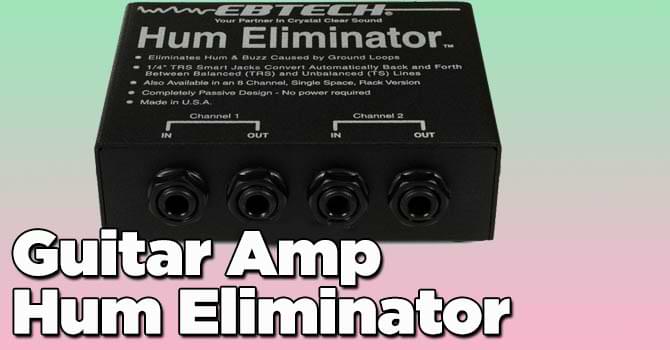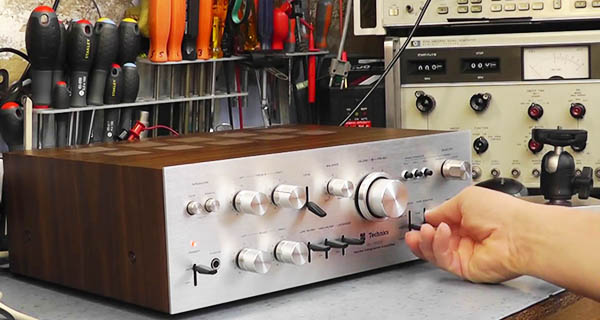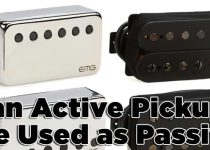Guitar Amp Hum Eliminator [Reduce Noise]
Welcome to the world of guitar amp hum eliminators, your ultimate solution to conquer the pesky buzzing and interference that plague your amplifier’s sound. If you’ve ever been frustrated by the unwanted hum disrupting your music, fear not! In this introductory guide, we will unravel the mysteries of hum eliminators – also known as ground loop isolators or noise suppressors.
Learn how these ingenious devices work to minimize or eliminate hum and interference from your audio signal, ensuring a clean and flawless tone. Whether you’re a seasoned musician or a beginner, understanding the power of a guitar amp hum eliminator is essential for achieving the purest, noise-free sound from your beloved guitar amplifier.

Get ready to immerse yourself in the world of pristine sound clarity as we dive into the realm of guitar amp hum eliminators.
# Table of Contents =>
- 1 I. Understanding Guitar Amp Hum –
- 2 What Causes Guitar Amp Hum?
- 3 Types of Guitar Amp Hum –
- 4 II. What is a Guitar Amp Hum Eliminator?
- 5 How Hum Eliminators Work –
- 6 Types of Hum Eliminators –
- 7 III. Choosing the Right Hum Eliminator:
- 8 a) Identifying Your Hum Issue –
- 9 b) Evaluating Features –
- 10 IV. How to Use a Guitar Amp Hum Eliminator:
- 11 V. Additional Tips to Reduce Guitar Amp Hum
I. Understanding Guitar Amp Hum –
What Causes Guitar Amp Hum?
Before we delve into hum eliminators, it’s essential to understand the root causes of the dreaded hum. Guitar amplifier hum typically results from electromagnetic interference (EMI) and radio frequency interference (RFI).
These interferences can originate from various sources, including power cables, electronic devices, lighting fixtures, and even nearby radio transmitters. Grounding issues, poor cable shielding, and faulty components can also contribute to the hum.
Types of Guitar Amp Hum –

Guitar amp hum can manifest in different forms, such as 60-cycle hum, which appears as a low-frequency buzz caused by the AC power supply’s 60 Hz frequency. Additionally, there is transformer hum, which emanates from the power transformer in the amplifier, and can create a mechanical buzzing sound.
II. What is a Guitar Amp Hum Eliminator?
How Hum Eliminators Work –
A guitar amp hum eliminator, serves the purpose of reducing the unwanted hum and interference from the audio signal. It also work to as a ground loop isolator suppressor. Its function is centered around isolating the ground connection between the audio source (guitar) and the amplifier. By disrupting the ground loop, which is a common culprit of hum, this device guarantees a clear and noise-free signal path, allowing you to enjoy a pristine musical experience.
Types of Hum Eliminators –
a) Passive Hum Eliminators:

These devices utilize passive components like transformers and filters to eliminate the hum. They are simple to use, require no power source, and are best suited for situations with low to moderate hum levels.
b) Active Hum Eliminators:

Active hum eliminators incorporate electronic circuitry to actively cancel out the hum. They often come with additional features like adjustable noise reduction controls, making them ideal for more complex setups or environments with high levels of interference.
III. Choosing the Right Hum Eliminator:
a) Identifying Your Hum Issue –
Before investing in a hum eliminator, it’s crucial to identify the specific type of hum affecting your guitar amplifier. Different hum eliminators are designed to tackle distinct types of interference, and choosing the right one will yield the best results.
b) Evaluating Features –
Consider the features offered by various hum eliminators, such as adjustable filters, ground lift options, and noise reduction controls. Depending on your setup and preferences, having these adjustable features can be beneficial in achieving the perfect noise reduction.
IV. How to Use a Guitar Amp Hum Eliminator:
a) Proper Placement –
Place the hum eliminator as close to the guitar as possible, typically at the beginning of your signal chain. This ensures that the unwanted hum is suppressed right from the source.
b) Correct Wiring –
Follow the manufacturer’s instructions for wiring the hum eliminator correctly. Improper wiring can lead to ineffective noise reduction or even damage the device.
c) Adjusting the Controls –

If your hum eliminator has adjustable controls, experiment with them to find the optimal settings for your specific setup and environment. Tweak the noise reduction and filtering options until you achieve the desired hum-free sound.
V. Additional Tips to Reduce Guitar Amp Hum
a) Check Cables and Connections –

Inspect all cables and connections for any signs of wear or damage. Replace or repair any faulty cables or connectors, as these can contribute to unwanted hum.
b) Isolate Power Sources –
Ensure that your guitar amp and other electronic devices are connected to the same power source or power conditioner to minimize ground loop issues.
c) Separate Audio and Power Cables –
Keep audio cables away from power cables to avoid potential interference.
d) Upgrade Components –
Consider upgrading your guitar amplifier’s components, such as better shielding, higher-quality transformers, and improved grounding systems, to reduce the likelihood of hum.
In the End, Guitar amp hum eliminators are a game-changer for any musician battling with unwanted noise in their sound. By understanding the causes of guitar amp hum and the types of hum eliminators available, you can confidently choose the best solution for your setup. Whether you opt for a passive or active hum eliminator, proper placement and adjustments are key to achieving optimal results.
By banishing the buzz and achieving a clean, noise-free signal. You can unleash your creativity and experience the joy of playing your guitar with absolute clarity. So, don’t let hum hold you back; invest in a quality guitar amp hum eliminator and take your musical journey to new heights. Happy playing!
Last Updated on August 7, 2023 by Perry Garner


